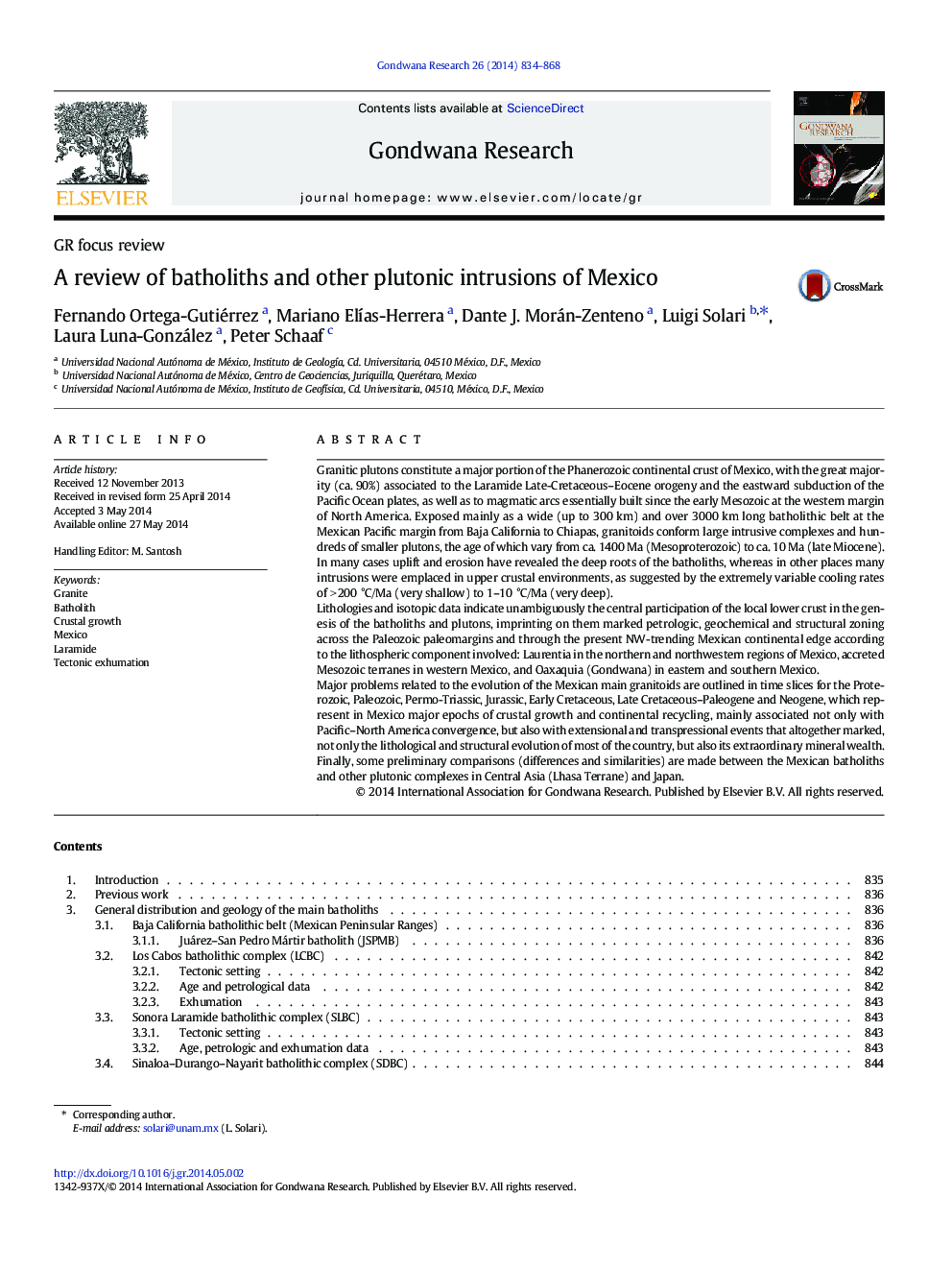| کد مقاله | کد نشریه | سال انتشار | مقاله انگلیسی | نسخه تمام متن |
|---|---|---|---|---|
| 4726828 | 1640142 | 2014 | 35 صفحه PDF | دانلود رایگان |
• First complete paper on the distribution, geology and tectonics of Mexican granites
• Over 130 plutons featured, ranging in age from Mesoproterozoic to late Miocene
• I, S and A-type granitoids described as subduction, shear and extension-related
Granitic plutons constitute a major portion of the Phanerozoic continental crust of Mexico, with the great majority (ca. 90%) associated to the Laramide Late-Cretaceous–Eocene orogeny and the eastward subduction of the Pacific Ocean plates, as well as to magmatic arcs essentially built since the early Mesozoic at the western margin of North America. Exposed mainly as a wide (up to 300 km) and over 3000 km long batholithic belt at the Mexican Pacific margin from Baja California to Chiapas, granitoids conform large intrusive complexes and hundreds of smaller plutons, the age of which vary from ca. 1400 Ma (Mesoproterozoic) to ca. 10 Ma (late Miocene). In many cases uplift and erosion have revealed the deep roots of the batholiths, whereas in other places many intrusions were emplaced in upper crustal environments, as suggested by the extremely variable cooling rates of > 200 °C/Ma (very shallow) to 1–10 °C/Ma (very deep).Lithologies and isotopic data indicate unambiguously the central participation of the local lower crust in the genesis of the batholiths and plutons, imprinting on them marked petrologic, geochemical and structural zoning across the Paleozoic paleomargins and through the present NW-trending Mexican continental edge according to the lithospheric component involved: Laurentia in the northern and northwestern regions of Mexico, accreted Mesozoic terranes in western Mexico, and Oaxaquia (Gondwana) in eastern and southern Mexico.Major problems related to the evolution of the Mexican main granitoids are outlined in time slices for the Proterozoic, Paleozoic, Permo-Triassic, Jurassic, Early Cretaceous, Late Cretaceous–Paleogene and Neogene, which represent in Mexico major epochs of crustal growth and continental recycling, mainly associated not only with Pacific–North America convergence, but also with extensional and transpressional events that altogether marked, not only the lithological and structural evolution of most of the country, but also its extraordinary mineral wealth. Finally, some preliminary comparisons (differences and similarities) are made between the Mexican batholiths and other plutonic complexes in Central Asia (Lhasa Terrane) and Japan.
Figure optionsDownload as PowerPoint slide
Journal: Gondwana Research - Volume 26, Issues 3–4, November 2014, Pages 834–868
